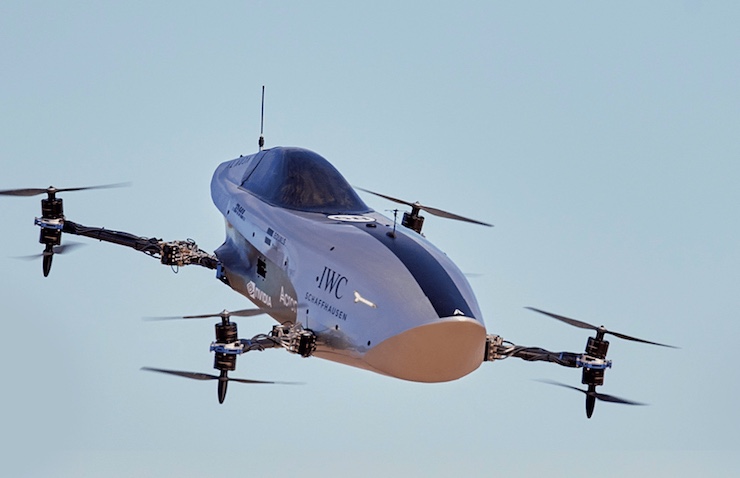Australian Entrepreneur, Creates a Flying Drone Race Car Company called Airspeeder

© Airspeeder
In Robert Zemeckis’s 1989 classic film, Back to the Future II, he envisioned the future, specifically the year 2015, to be dominated by technology. Some of the technology predicted in the film has come true such as 3D films, wireless touch screen tablets, and live video conferencing. One of the most anticipated technological advances shown in Back to the Future was flying cars. For years now, aerospace vehicle designers have been toying with the idea of cars that are not bound to roads, and can instead soar through the air. In the last decade, the advancement of drone technology has paved the way for flying cars to become a future reality.
Australian born entrepreneur, Matt Pearson, has found a way to not only design a flying car, but to propel the aerial urban mobility industry. Taking inspiration from the greats of motorsports like Ford, Bentley, and Mercedes, who all began their car companies with racing vehicles, Matt is proposing that the way to spur aerial mobility is through racing. His visionary motorsport is called Airspeeder and is based out of southern Australia, where the flying vehicles are designed and manufactured by Alauda Aeronautics.
Head Designer Felix Pierron based the design of the vehicle, the MK (models 1,2,3,&4), on a Formula1 racing car that has the mobility of a helicopter. Eventually, the flying race cars will be piloted through augmented reality digital racecourses. But before allowing people to hop into an MK cockpit, the Airspeeder team will be flying the vehicles remotely, just like the drones that have made much of their production possible.
The MK flying cars look like a large, sleek drone, similar to the Parrot Anafi drone. They have a narrow, elongated chassis with four arms extending from them. Atop of these arms are 2 sets of rotors, one each on the top and underside. The flying cars are powered by an interchangeable battery the same way a drone is. The MKs also use the same safety redundancy platforms that drone technology uses for obstacle avoidance.
In June of 2021, Airspeeder had the chance to begin its first racing series called EXA, featuring the MK3. The MK3 is a carbon fiber eVTOL (Electric Vertical TakeOff and Landing) drone. The drone can accelerate from 0-60mph in 2.8 seconds and has a maximum speed of 124mph. The race was held at an undisclosed location near Alauda Aeronautics’ home base. Every aspect of the test race was closely monitored by Australia’s Civil Aviation Authority, similar to the United State’s Federal Aviation Administration. All of the EXA races were remotely piloted, just as professional drones are raced. The main difference is that the drones being raced in EXA are far larger than typical racing drones that weigh less than 5lbs.
Just as racing was the starting point for car companies like Ford, Mercedes, and many more, Matt believes that aerial motorsports will revolutionize aerial urban mobility, both manned and unmanned. “We believe that racing is going to be the great catalyst to propel the industry forward. The Airspeeder mission is to be the race that creates the ultimate flying car. That race we want it to be motorsport in the sky,” Matt said. “Multiple vehicles starting together in the air at the same time. This is not a new air race, this is motorsport in the sky.”
|